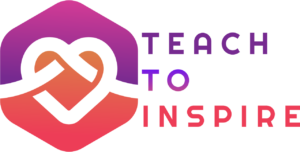The Growing Need for Efficient Appointment Management
Businesses across industries are realizing that time is one of their most valuable resources. Every missed meeting, scheduling error, or double booking translates to lost revenue and damaged relationships. In today’s fast-paced digital environment, customers expect instant access to services and seamless booking experiences. That’s where an appointment setting program becomes a vital tool for modern organizations. It removes the complexity of manual scheduling and allows teams to focus on their core business activities. By automating bookings and confirmations, companies can reduce administrative burden and improve customer satisfaction simultaneously. As digital transformation accelerates, effective scheduling software has become not just a convenience but a strategic advantage that fuels long-term productivity and growth.
What Is an Appointment Setting Program and How It Works
An appointment setting program is a software solution designed to automate and organize meetings, calls, or service appointments between businesses and clients. It typically integrates with calendars, CRMs, and communication tools to streamline every step of the scheduling process. When implemented properly, it eliminates time-consuming back-and-forth emails and enables customers to book at their convenience. Most systems include features like automated reminders, smart notifications, and time zone adjustments, ensuring accuracy and efficiency. Businesses can customize parameters such as availability, appointment types, and meeting lengths to fit their unique needs. The program automatically syncs appointments across devices and platforms, keeping every team member aligned in real time. By simplifying these tasks, the software enhances internal collaboration and strengthens customer relationships.
Core Benefits of Implementing an Appointment Setting Program
One of the most significant advantages of using an appointment setting program is increased efficiency. Automation reduces manual work and minimizes scheduling conflicts, freeing staff to focus on revenue-generating activities. The system also lowers the number of missed appointments by sending automatic confirmations and reminders, which keeps clients engaged and punctual. In sales environments, this software improves lead conversion rates by ensuring timely follow-ups and consistent communication with prospects. Customer trust grows when interactions are seamless and professional. The ability to gather data on appointment volume, customer behavior, and team performance helps businesses make informed decisions. Ultimately, this streamlined process enhances both operational workflow and overall client experience, leading to stronger loyalty and improved profitability.
Essential Features to Look for When Choosing an Appointment Setting Program
When selecting an appointment setting program, it’s crucial to evaluate which features align with your organization’s specific goals. Look for systems that offer flexible scheduling options capable of handling various appointment types, from in-person consultations to virtual meetings. Calendar synchronization is another must-have, allowing seamless integration with popular tools like Google Calendar, Outlook, and iCal. Automated reminders and confirmations should be standard, reducing no-shows and improving communication. For sales-driven organizations, integration with CRM and marketing tools provides valuable insights and enhances follow-up efficiency. Reporting and analytics features help measure appointment success rates and track overall performance. Lastly, ensure the software includes strong data security protocols to protect client information and maintain compliance with privacy regulations. A well-rounded feature set ensures the program supports long-term scalability and reliability.
How to Successfully Implement an Appointment Setting Program
Implementing a new appointment setting program requires a thoughtful, step-by-step approach to ensure a smooth transition. Begin by assessing your current scheduling challenges and identifying areas for improvement. Next, select a solution that meets your operational and technical requirements, considering factors such as integration compatibility and team size. Involve key staff early in the process to encourage adoption and gather feedback. Proper training is essential so employees can fully leverage the program’s features, such as automated workflows and calendar syncing. It’s also important to test the system thoroughly before rolling it out to clients, ensuring there are no errors in setup or configuration. After deployment, monitor performance through metrics like appointment volume, attendance rates, and client satisfaction. Continual refinement based on real-world data helps maintain efficiency and long-term success.
Industries That Benefit Most from Appointment Setting Programs
Nearly every industry that relies on meetings or client interactions can benefit from using an appointment setting program. In B2B sales and lead generation, it enables teams to schedule qualified meetings quickly and maintain consistent outreach. Healthcare providers use scheduling software to manage patient appointments, reducing wait times and improving communication. Financial advisors and insurance professionals rely on automated booking tools to coordinate consultations efficiently with multiple clients. Real estate agents gain flexibility by offering instant online booking for property tours and consultations. Educational institutions and consulting firms also take advantage of these programs to organize sessions, interviews, and advising appointments. The versatility of this technology means it can be tailored to fit different business models, helping organizations operate more smoothly regardless of industry type. When properly applied, these programs enhance productivity across the entire service chain.
How Appointment Setting Programs Enhance Customer Experience
Customer satisfaction often depends on how easy it is to engage with a business. An appointment setting program simplifies that process by allowing clients to schedule services at their own convenience, even outside of standard business hours. Automated confirmations and reminders reduce uncertainty, keeping customers informed and reassured. Personalization features such as tailored messages, follow-ups, and preferred communication channels create a more engaging experience. The accessibility of mobile-friendly booking tools ensures that users can manage appointments on any device, making the process effortless and user-centric. Furthermore, accurate scheduling minimizes waiting times and double bookings, enhancing reliability and professionalism. Clients are more likely to return when they experience smooth and responsive interactions. By building trust and consistency, businesses create stronger relationships that contribute to higher retention rates and positive word-of-mouth.
Comparing Paid vs. Free Appointment Setting Programs
Choosing between a free or paid appointment setting program depends on your organization’s budget, size, and functionality needs. Free versions typically offer basic scheduling features suitable for startups or solo professionals. However, they may lack advanced tools like CRM integration, detailed analytics, or branded customization. Paid solutions, on the other hand, provide a wider range of features designed to support scalability and complex workflows. These premium programs often include enhanced security, priority support, and advanced automation capabilities that justify the investment. While the upfront cost might seem higher, the long-term efficiency gains and customer satisfaction benefits often outweigh the expense. Businesses should carefully evaluate total cost of ownership, considering both subscription fees and potential savings from improved productivity. Ultimately, the right choice balances affordability, flexibility, and long-term growth potential.
Future Trends in Appointment Setting Technology
The future of appointment management is moving toward smarter, AI-driven automation. Artificial intelligence can analyze user patterns to suggest optimal meeting times, forecast demand, and personalize client interactions. Predictive analytics tools will allow businesses to anticipate cancellations and reschedule proactively. Voice assistants and chatbots are becoming integrated into appointment systems, making it easier for users to book via voice commands or instant messaging. As remote work continues to expand, mobile-first designs and virtual appointment tools will become essential features. Enhanced data analytics will offer deeper insights into customer behavior, helping organizations refine their strategies. The trend toward seamless integration with sales and marketing platforms will also continue, creating unified ecosystems that boost efficiency. These technological advances will redefine how businesses and clients connect, ensuring more intelligent and intuitive scheduling experiences.
Final Insights on Leveraging an Appointment Setting Program for Growth
Adopting an appointment setting program is more than a technical upgrade—it’s a strategic decision that impacts every layer of a business. By automating repetitive scheduling tasks, organizations can redirect time and energy toward innovation, client engagement, and revenue growth. The program also helps maintain a consistent brand image through professional communication and reliable service delivery. Businesses that invest in smart scheduling technology position themselves ahead of competitors still using outdated manual systems. Over time, these improvements translate to increased client retention, higher conversion rates, and better operational efficiency. Evaluating your workflows and adopting an appropriate scheduling system is a proactive move toward long-term sustainability. The right program doesn’t just manage appointments—it transforms how your organization interacts with its audience.
Frequently Asked Questions (FAQ)
1. What is an appointment setting program used for?
It’s a software solution that automates the process of scheduling, managing, and tracking meetings or appointments, helping businesses save time and reduce administrative work.
2. Can small businesses benefit from appointment setting software?
Yes. Small businesses often see quick results because automation reduces manual scheduling, improves professionalism, and increases client satisfaction.
3. How secure are appointment setting programs?
Most reputable solutions follow strict data protection standards, including encryption, secure servers, and compliance with privacy laws like GDPR or HIPAA, depending on the industry.
4. What features should I prioritize when selecting an appointment setting tool?
Focus on calendar synchronization, automated reminders, CRM integration, customizable settings, and analytics to ensure flexibility and performance tracking.
5. Are free appointment setting programs worth it?
Free versions can be useful for startups or individuals but may lack advanced functions. Paid versions provide better scalability, integrations, and support for business growth.

